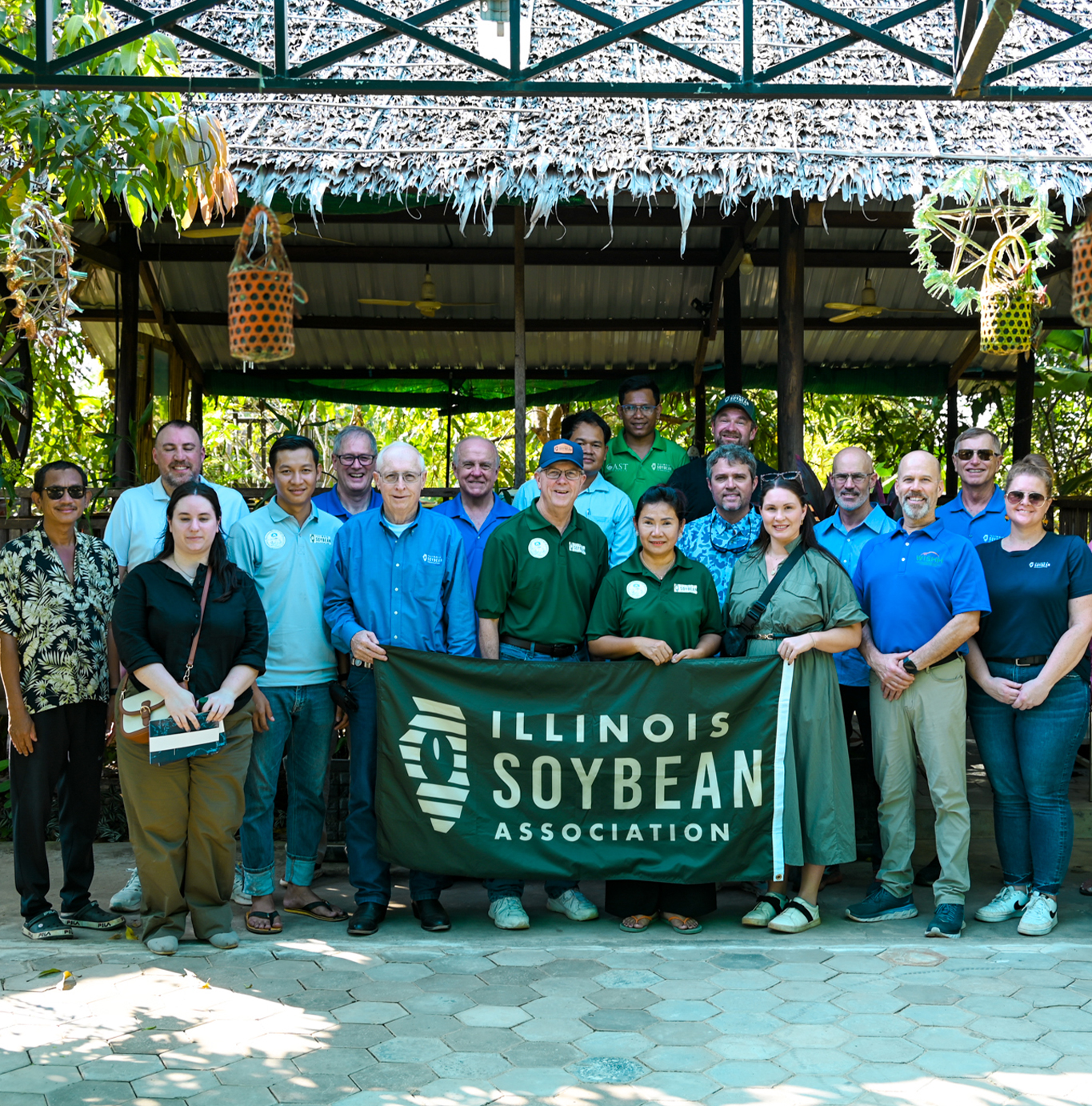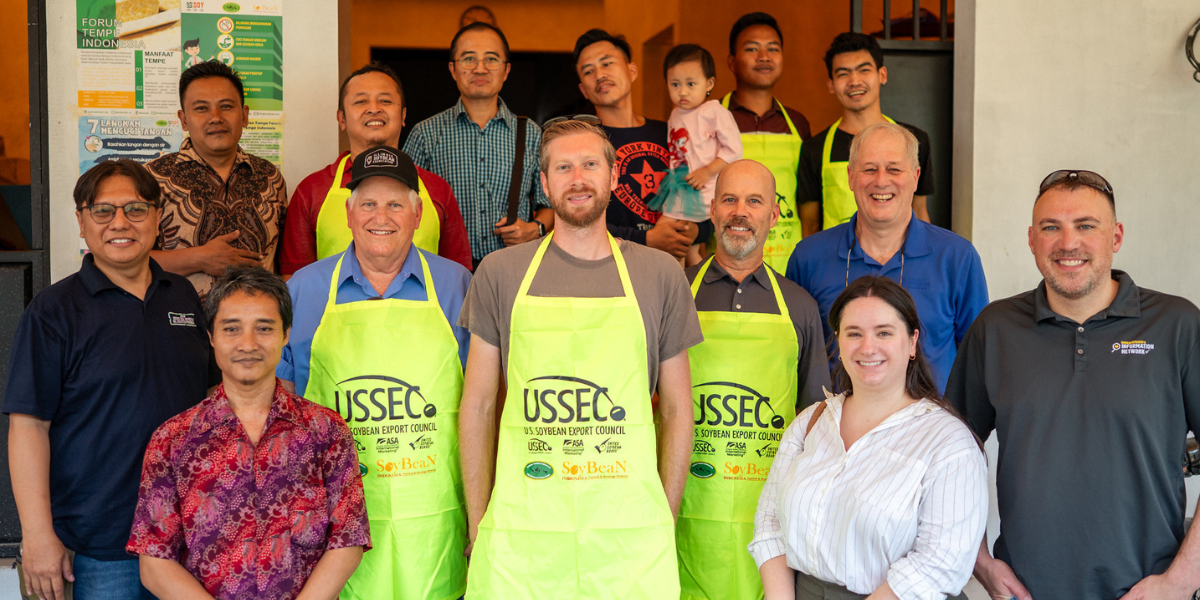By Eileen Pabst, ISA International Markets Manager
Southeast Asia Trip Highlights Soy Demand Opportunities, Barriers
How do you grow a budding trade relationship between Illinois soybean farmers and buyers in Southeast Asia? Consult the lyrics of a song made famous by Beatles member George Harrison, advises Jeff O’Connor, farmer and At Large Director, Illinois Soybean Association.
“’It’s gonna take time, a whole lot of precious time,’” O’Connor says, quoting the song. “’It’s gonna take patience and time… to do it right.’”
In January, myself along with O’Connor and other ISA leaders made that essential investment of precious time, traveling to three countries in the region. We walked away with a clear sense of substantial opportunities ahead for Illinois farmers, along with deeper awareness of the systemic challenges Cambodia, the Philippines and Vietnam face in forging stronger trade relationships.
“We had several goals for the trip, but the main goal was to maintain and expand our soybean and soybean meal exports,” explains Mark Read, ISA District 5 Director. He farmed about 2,300 acres of corn and soybeans with his brother, Chuck, before retiring and renting the farm to an experienced strip-till farmer. “U.S soybean exports have declined in recent years for various reasons including COVID, African swine fever and currency issues. We see good potential growth over the next several years.”
Here’s a look at how Southeast Asia’s post-pandemic recovery is progressing—and the insights we gleaned along the way that travelers O’Connor, Read and Caitlyn Abbey, ISA International Markets Specialist, say will strengthen paths for Illinois soy into the region.
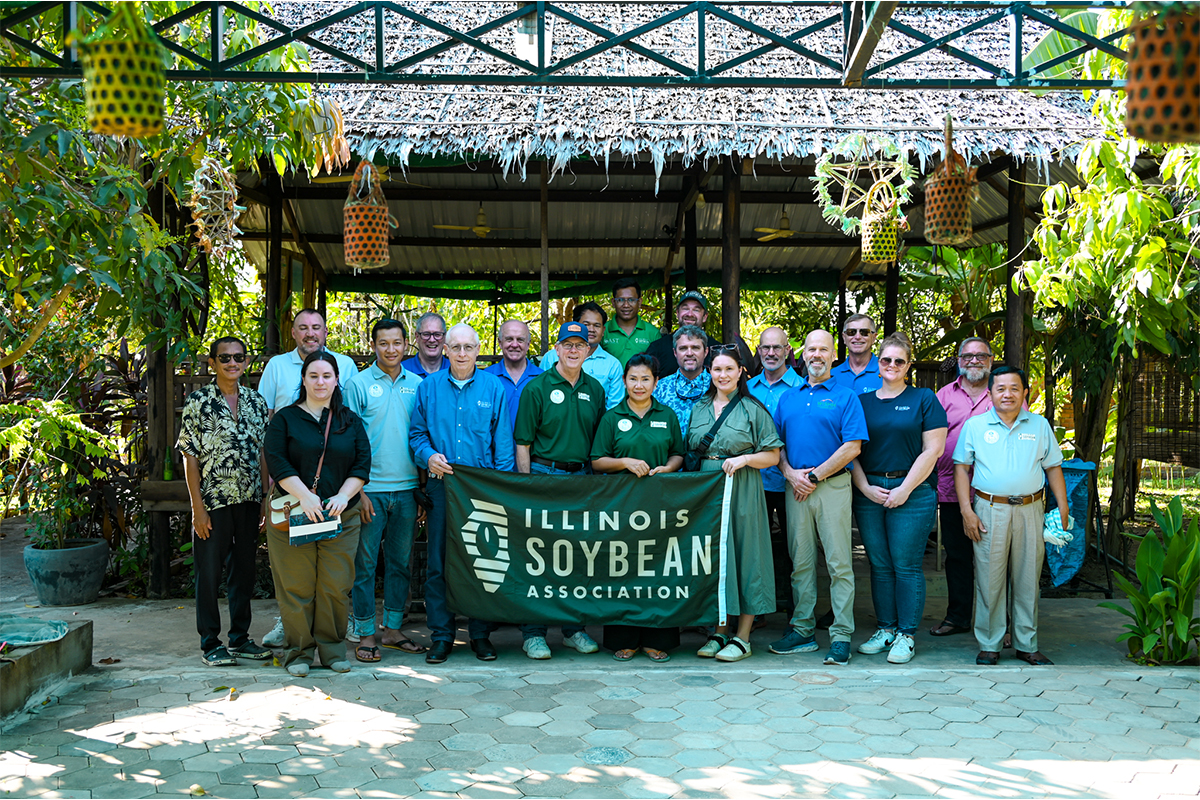
While in Cambodia, the team visited Rathada Hatchery Farm, a fish processing and retail outlet that adopted improved aquaculture practices through ASA/WISHH’s Commercialization of Aquaculture for Sustainable Trade (CAST) project.
Challenges And Opportunities
Infrastructure and logistics pose significant hurdles for soybean buyers in Cambodia and the Philippines, O’Connor observes. Vietnam appears best positioned to handle new soy orders.
“Cambodia and the Philippines both share logistics challenges,” he says. “Cambodia relies on transportation through Vietnam first because they have no deepwater port. Manila in the Philippines is their hub for international trade, and subsequent travel is by smaller watercraft. Vietnam is well developed and has a population with a growing GDP. They do have the infrastructure for international trade and a river system to move into other countries.”
Each country’s investments in accommodating soybean purchases reflects local culture, dietary preferences and relationships with trade partners, Abbey points out. Here’s how she describes the position of each country our group visited:
- Cambodia: “They are investing in aquaculture as a future market for protein consumption,” Abbey explains. “Industry leaders work there very closely with industry leaders in Vietnam but are looking for more independence to start buying and importing into their own country.”
- Philippines: “Industry leaders love U.S. quality but usually buy on price,” she notes. “The relationship between the Philippine government and the U.S. government gives stability to trade in the country.”
- Vietnam: “The country is growing very fast and is in need of more protein to feed its growing population,” Abbey says. “The market is expanding very fast, and industry leaders are looking forward to growing the Vietnamese market.”
Addressing those needs is something Illinois farmers are well-positioned to do, Read says. He credits programs such as World Initiative for Soy in Human Health (WISHH) for promoting emerging industries in the region such as aquaculture and building meal demand, in particular.
“Illinois is the leading container exporter as well as the leading bulk exporter in the U.S.,” he explains. “About 60 percent of Illinois soybeans are exported, so it is vital that we keep our customers satisfied.”
Deeper challenges date back years and reflect political and leadership changes in the individual countries.
“Cambodia best exemplifies the barriers for new markets,” O’Connor says. “Historically, it has had an unstable government. They are trying to develop that stability while at the same time supporting their population after generations of abuse. The food system needs to build the underlying calorie and protein needs for the population after decimating it through prior food-acquisitioning processes. Basically, they need to create a modern system to grow food essentials economically.”
Hog herd rebuilding is a key priority for the Philippines, which faces significant setbacks from African swine fever. “They were building back up (their herd) as we were there,” Read says. “Soymeal is a big part of the swine ration, so it is encouraging that demand should grow in the future.”
Meanwhile, the Philippines must reckon with growing geopolitical challenges from neighboring China.
“The Philippines is facing increasing tensions with China over disputed territorial and maritime claims in the South China Sea,” Read explains. “We have seen more shipping problems around the world in recent times. We need safe shipping lanes to be able to move our grain safely.”
High post-COVID transportation costs are another barrier, Abbey says.
Currency challenges and inflation pressures will also have a bearing on these countries’ economies.
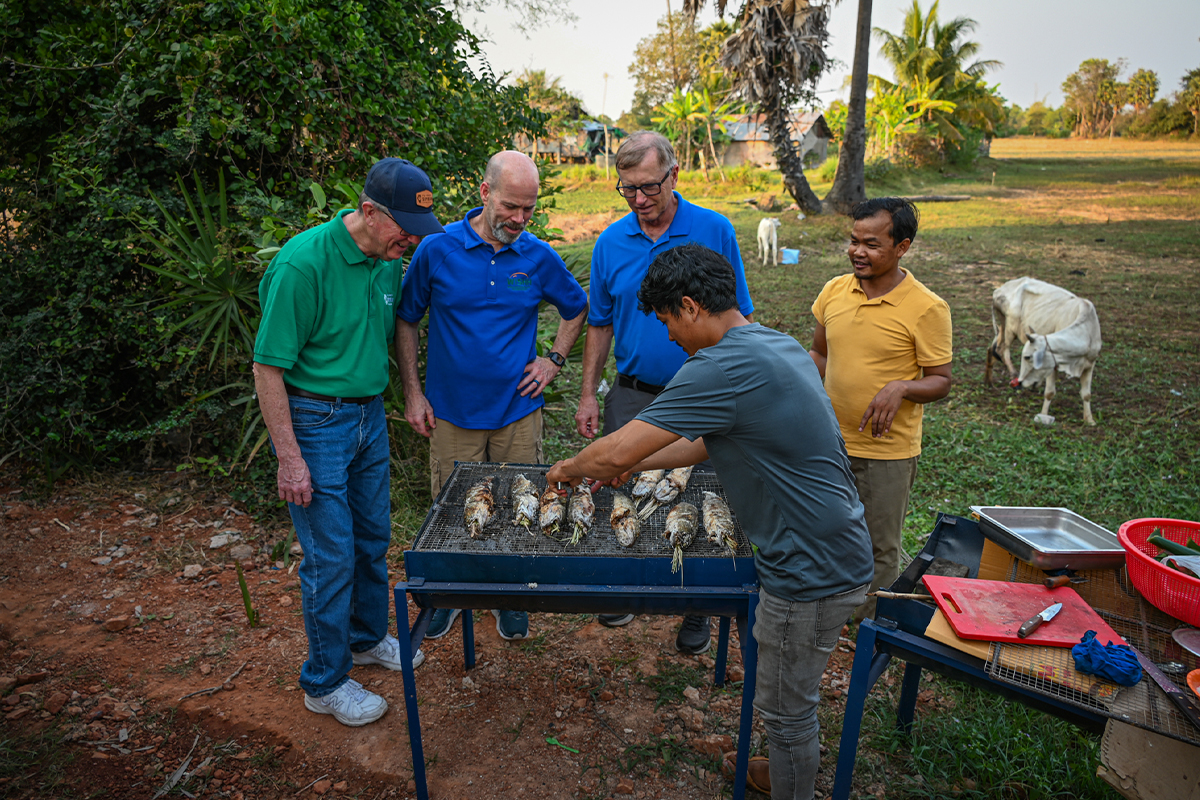
Also while in Cambodia, the team toured Made for This Fabrication, an organization that provides citizens in Siem Reap with vocational training.
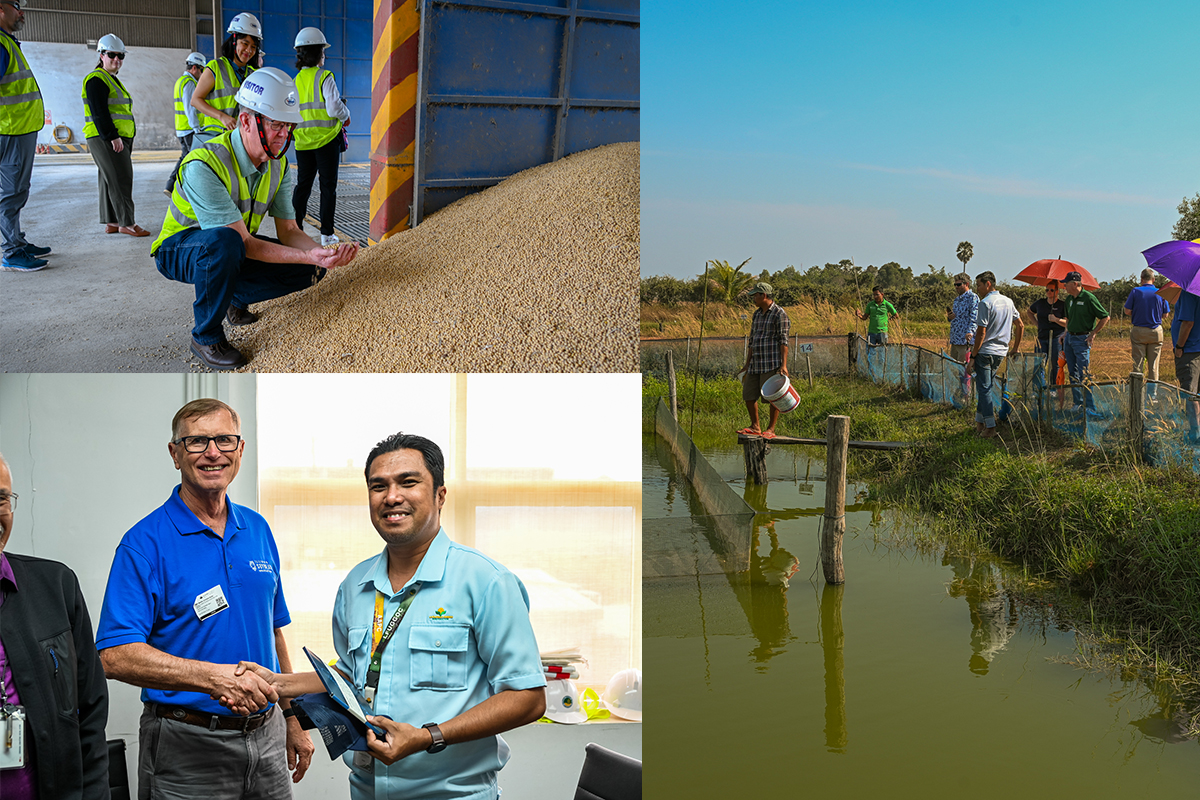
During the visit, team ISA met with several organizations and industry leaders to explore soybean meal market opportunities for Illinois soybean farmers.
Consistency, Quality and Price
Throughout the trip, our ISA contingent of farmers and staff leadership emphasized several key benefits of Illinois soy that are attractive to local buyers.
“Quality and price are the two top considerations,” Abbey explains.
O’Connor agrees, noting the “quality and consistency of product year after year after year.” Other factors local buyers value about Illinois soy include amino acid content and digestibility, plus the reliability and timeliness of deliveries.
Verifiable sustainability of the crop is another advantage. Our team discussed the U.S. Soybean Export Council’s (USSEC’s) Sustainable U.S. Soy Assurance Protocol (SSAP), which verifies that soybeans were grown in a sustainable manner.
“This program is growing worldwide as more countries are concerned with the climate crisis, and U.S. soy stands in a good position to address this,” Read says.
During the trip, we scheduled numerous in-person meetings with leaders in industry and government.
“We tried to meet with different levels of the industry, from importers to feed millers and end-users,” Abbey explains.
Looking Ahead
Underlying fundamentals suggest the relationship between Illinois and Southeast Asia is on strong footing moving forward.
For one thing, many countries lack sufficient electricity infrastructure to process their own soybean meal, making imports of Illinois soy attractive, O’Connor says. Other countries in the region have access to other vegetable oils, so demand is lower. But Cambodia, the Philippines and Vietnam value U.S. soy oil because they lack comparable access.
Demographics of the region also tell an important story long-term, Abbey adds.
“This market is significant because as China’s population declines, Southeast Asia will be our future biggest market,” she says.
Back home in the U.S., Illinois farmers can use these insights from our trip and take action to sustain such trade relationships.
“Illinois farmers need to have a better understanding of the value of free trade and the impacts of tariffs,” O’Connor explains. “Advocating for fewer trade restrictions to open markets should be a priority among Illinois soybean farmers.”
Checkoff dollars are making this kind of demand growth possible, Read adds. “We value trade agreements that remove barriers, open markets and encourage U.S. government support for trade,” he says. “We want to improve access to global markets for U.S. soybeans, corn, wheat and livestock products.”
To learn more about opportunities in Southeast Asia, Abbey encourages growers to follow updates from USSEC.
“Farmers can continue to communicate with those that they met on this trip and continue to help support ISA’s initiatives surrounding Southeast Asian countries,” she says.
Recent Articles
ISA recently traveled to Indonesia to explore growth potential for U.S. soy's No. 4 trade partner.
By IL Field & Bean Team
